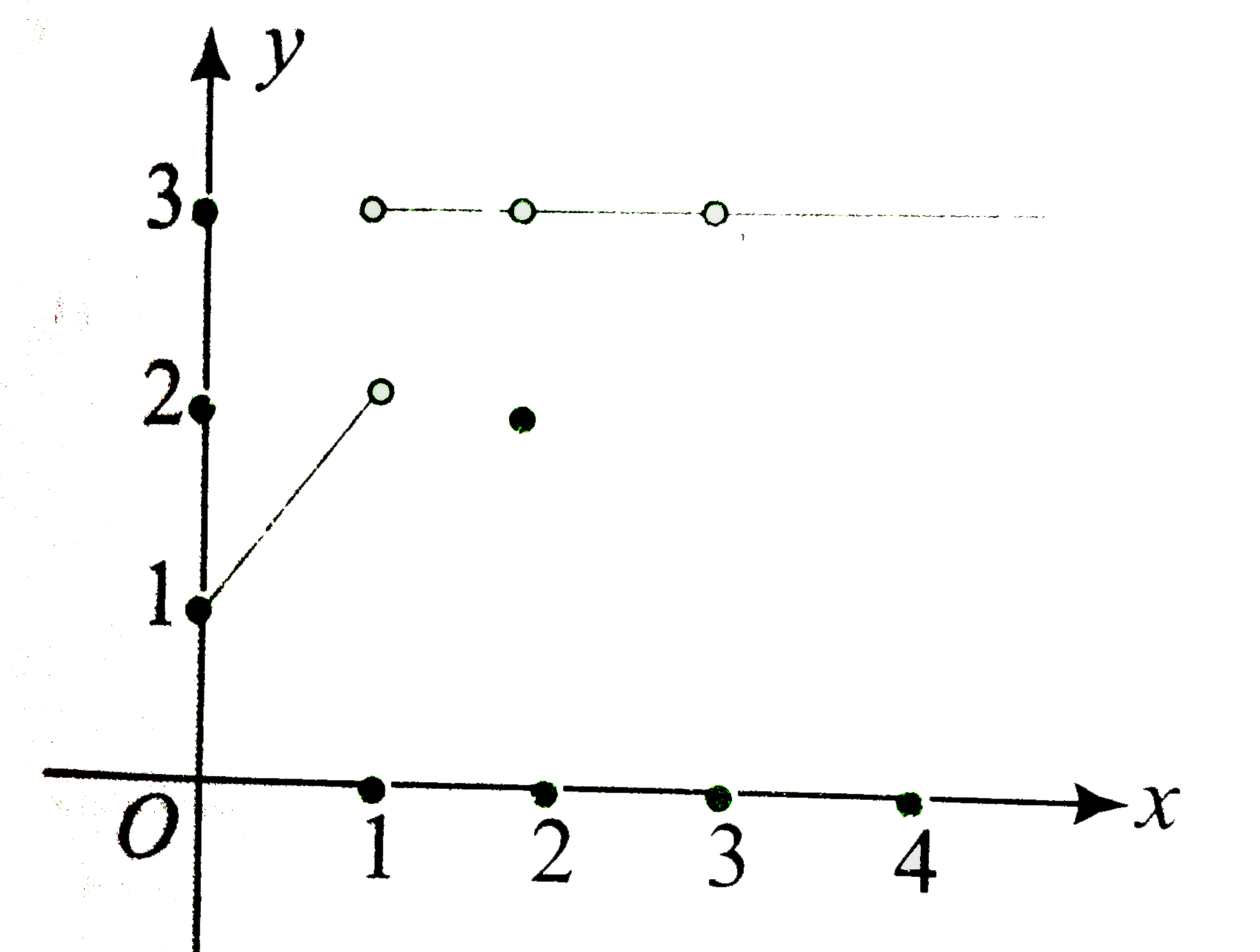If f(x)=3x2+ax+a+1x2+x−2, then which of the following can be correct (lim)x→1f(x)eξstsa=−2 (lim)x→−2f(x)eξstsa=13 (lim)x→1f(x)=43 (lim)x→−2f(x)=−13
To solve the problem, we need to analyze the function f(x)=3x2+ax+(a+1)x2+x−2 and determine the limits as x approaches certain values based on the given conditions.
Step 1: Factor the Denominator
The denominator can be factored as follows:
x2+x−2=(x−1)(x+2)
Step 2: Check the First Option
We need to check if limx→1f(x) exists and if it implies a=−2.
1. As x→1, the denominator approaches 0. Therefore, the numerator must also approach 0 for the limit to exist.
2. Set the numerator equal to 0 when x=1:
3(1)2+a(1)+(a+1)=0
Simplifying this gives:
3+a+a+1=0⟹2a+4=0⟹a=−2
Conclusion for Option 1: This statement is true.
Step 3: Check the Second Option
Now check if limx→−2f(x) exists and if it implies a=13.
1. As x→−2, the denominator approaches 0. Therefore, the numerator must also approach 0.
2. Set the numerator equal to 0 when x=−2:
3(−2)2+a(−2)+(a+1)=0
Simplifying this gives:
12−2a+a+1=0⟹13−a=0⟹a=13
Conclusion for Option 2: This statement is true.
Step 4: Check the Third Option
Now check if limx→1f(x)=43.
1. Substitute a=−2 into the function:
f(x)=3x2−2x−1(x−1)(x+2)
2. Simplifying the numerator:
3x2−2x−1=3(x−1)(x+13)
3. The limit becomes:
limx→13(x−1)(x+13)(x−1)(x+2)=limx→13(x+13)x+2
4. Evaluating this limit:
=3(1+13)1+2=3⋅433=4
Conclusion for Option 3: This statement is true.
Step 5: Check the Fourth Option
Now check if limx→−2f(x)=−13.
1. Substitute a=13 into the function:
f(x)=3x2+13x+14(x−1)(x+2)
2. The limit becomes:
limx→−23(−2)2+13(−2)+14(−2−1)(−2+2)=12−26+14(−3)(0)
3. Since the denominator approaches 0 and the numerator does not, we need to check the behavior around x=−2.
Conclusion for Option 4: This statement is false.
Final Results
- Option 1: True (a = -2)
- Option 2: True (a = 13)
- Option 3: True (lim = 4/3)
- Option 4: False (lim ≠ -1/3)
The denominator can be factored as follows:
x2+x−2=(x−1)(x+2)
We need to check if limx→1f(x) exists and if it implies a=−2.
2. Set the numerator equal to 0 when x=1:
3(1)2+a(1)+(a+1)=0
Simplifying this gives:
3+a+a+1=0⟹2a+4=0⟹a=−2
Now check if limx→−2f(x) exists and if it implies a=13.
2. Set the numerator equal to 0 when x=−2:
3(−2)2+a(−2)+(a+1)=0
Simplifying this gives:
12−2a+a+1=0⟹13−a=0⟹a=13
Now check if limx→1f(x)=43.
f(x)=3x2−2x−1(x−1)(x+2)
2. Simplifying the numerator:
3x2−2x−1=3(x−1)(x+13)
3. The limit becomes:
limx→13(x−1)(x+13)(x−1)(x+2)=limx→13(x+13)x+2
4. Evaluating this limit:
=3(1+13)1+2=3⋅433=4
Now check if limx→−2f(x)=−13.
f(x)=3x2+13x+14(x−1)(x+2)
2. The limit becomes:
limx→−23(−2)2+13(−2)+14(−2−1)(−2+2)=12−26+14(−3)(0)
3. Since the denominator approaches 0 and the numerator does not, we need to check the behavior around x=−2.
- Option 1: True (a = -2)
- Option 2: True (a = 13)
- Option 3: True (lim = 4/3)
- Option 4: False (lim ≠ -1/3)
Similar Questions
Knowledge Check
If the function f(x) satisfies limx→1f(x)−2x2−1=π, then limx→1f(x) is equal to
A1B2C0D3
If (lim)x→2f(x−9)x−2=3 then (lim)x→2f(x), is
View SolutionEvaluate the following: (lim)x→1[11+x−31+x3]
View SolutionIf f(x)=x(e|x|+[x]−2|x|+[x]) then (where [.] represents the greatest integer function) (lim)x→0+f(x)=−1 b. (lim)x→0−f(x)=0 c. (lim)x→0□f(x)=−1 d. (lim)x→0□f(x)=0
View SolutionConsider the following graph of the function y=f(x). Which of the following is//are correct?

(a)limx→1f(x) does not exist.
(b)limx→2f(x) does not exist.
(c)limx→3f(x)=3.
(d)limx→1.99f(x)exists.
View SolutionConsider the following graph of the function y=f(x). Which of the following is/are correct? fig. (lim)x→1f(x) does not exist. (lim)x→2f(x) does not exist. (lim)x→3f(x)=3
View SolutionIf limx→−2f(x)x2=1, find (i)limx→−2f(x);(ii)limx→−2f(x)x
View SolutionIf limx→−2f(x)x2=1, find (i) limx→−2f(x) and (ii) limx→−2f(x)x
View Solution
